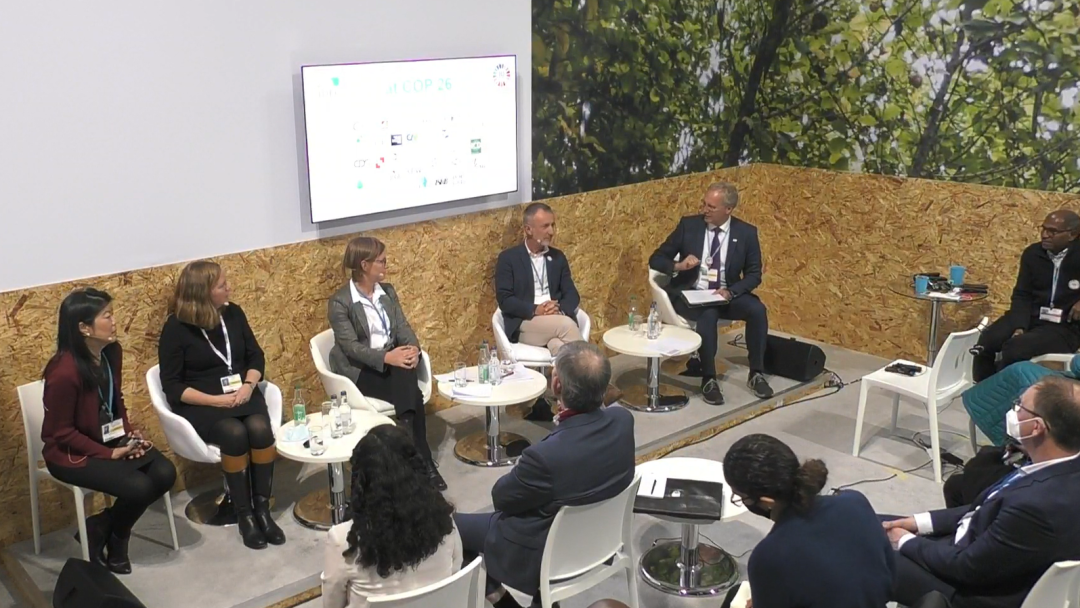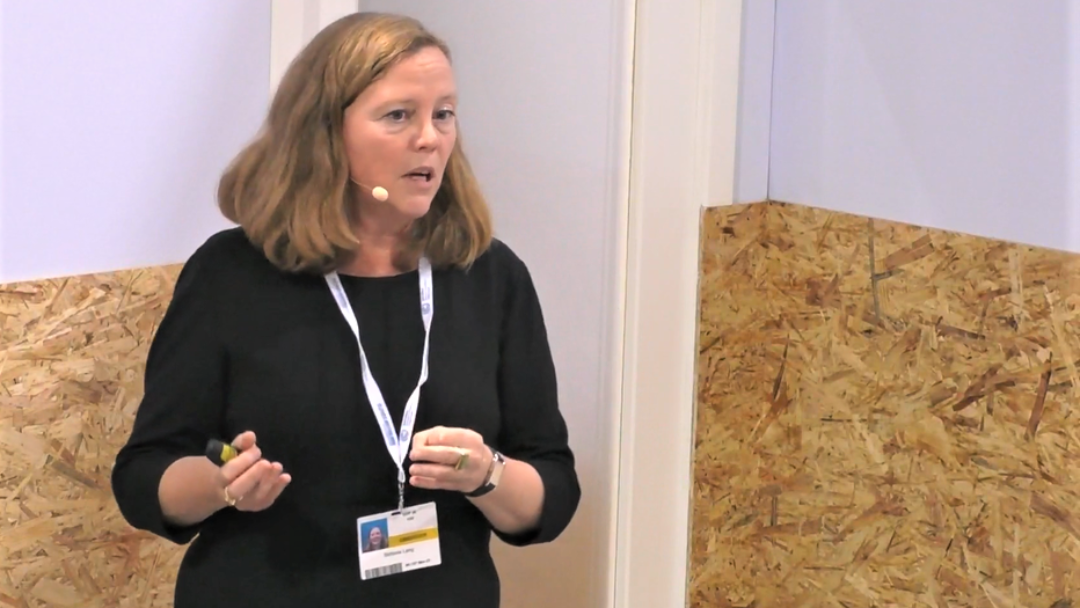News from 2021-11-10 / KfW Development Bank
Legacy Landscapes Fund presented in Glasgow
The Legacy Landscapes Fund was presented at the climate summit in Glasgow as an innovative financing instrument not only for biodiversity, but also for climate protection and adaptation. The LLF thus helps to close the financing gap for both of these two urgent global problems.

In a side event entitled “Conservation Trust Funds as Boosters for Nature Based Solutions” the Legacy Landscapes Fund introduced itself to a larger international public and to the climate funding community. The discussion showed once again that the climate and biodiversity crisis are intertwined and interdependent. And it became evident that there is still an enormous financing gap.
All speakers on the podium agreed that the two crises have to be seen and addressed together. Barbara Schnell, Head of Sector Policy Department at KfW Development Bank, pointed out the importance of carbon sinks as an essential element for becoming carbon neutral. She considered nature-based solutions as a “bridge” to climate mitigation and adaptation. It is very important, she said, to keep forests and protected areas intact to preserve them as a source of nature-based solutions: “It is much better to save mangroves than to build dykes.” Schnell argued that climate funding should at the same time contribute to biodiversity funding.
Need for greater convergence
Gilles Kleitz from the French Development Agency AFD also called for greater “convergence” of climate and biodiversity - in every respect, not least in financing. He informed the audience about AFD´s goal to spend 30 % of its climate budget on biodiversity because “we have to bring the two things together”. Nature-based solutions, he said, have a great potential and we should promote them much more. Therefore, the Legacy Landscapes Fund, he said, “comes at the right point of time” because long-term commitments are needed now. Currently, he said, only about one third of the biodiversity funding necessary to save essential biodiversity and to protect the climate is available.
The LLF is an international public private fund for biodiversity, officially launched in May 2021. It goes back to a German initiative but is open to donors from around the world. Its financing was initiated by KfW Development Bank on behalf of the Federal Ministry for Economic Cooperation and Development (BMZ) but its financial resources come from public and private donors.
A climate and biodiversity fund
LLF Executive Director Stefanie Lang introduced some of the key features of the new fund, which provides long-term financing to at least 30 legacy landscapes in developing countries. Presently it has a funding volume of around 180 million dollars but is intended to grow to up to one billion dollars. The LLF starts with seven pilot sites two of which have already been approved: Madidi and North Luangwa National Parks in Bolivia and Zambia. More sites are to follow within the coming months.

By supporting these seven sites LLF helps to store up to 1.54 gigatons of carbon which is roughly equivalent to 16 % of the global annual carbon emissions. This figure shows, said Stefanie Lang, that the LLF “is not only a biodiversity fund but is as much a climate fund as well.” Along those lines Aileen Lee from the Gordon and Betty Moore Foundation called the LLF “an important piece of the solution” also to the climate crisis. Barbara Schnell added that the LLF was not only an innovative financial mechanism but also an important standard setter for protected areas, human rights and work with adjacent communities.

Share page
To share the content of this page with your network, click on one of the icons below.
Note on data protection: When you share content, your personal data is transferred to the selected network.
Data protection
Alternatively, you can also copy the short link: https://www.kfw-entwicklungsbank.de/s/enzBWrMC.CmLA
Copy link Link copied